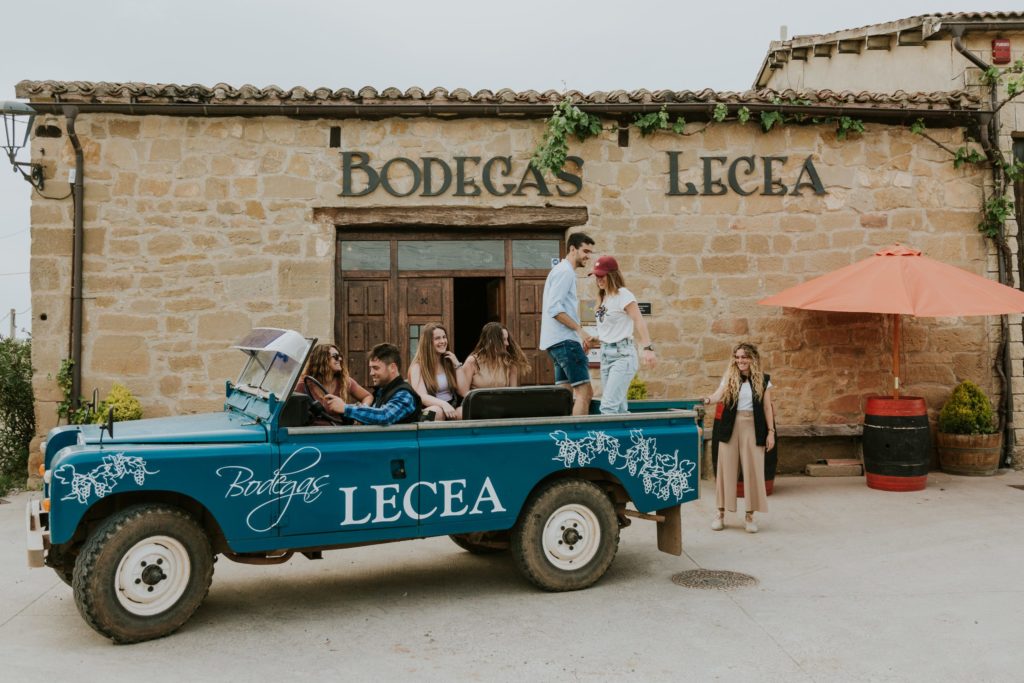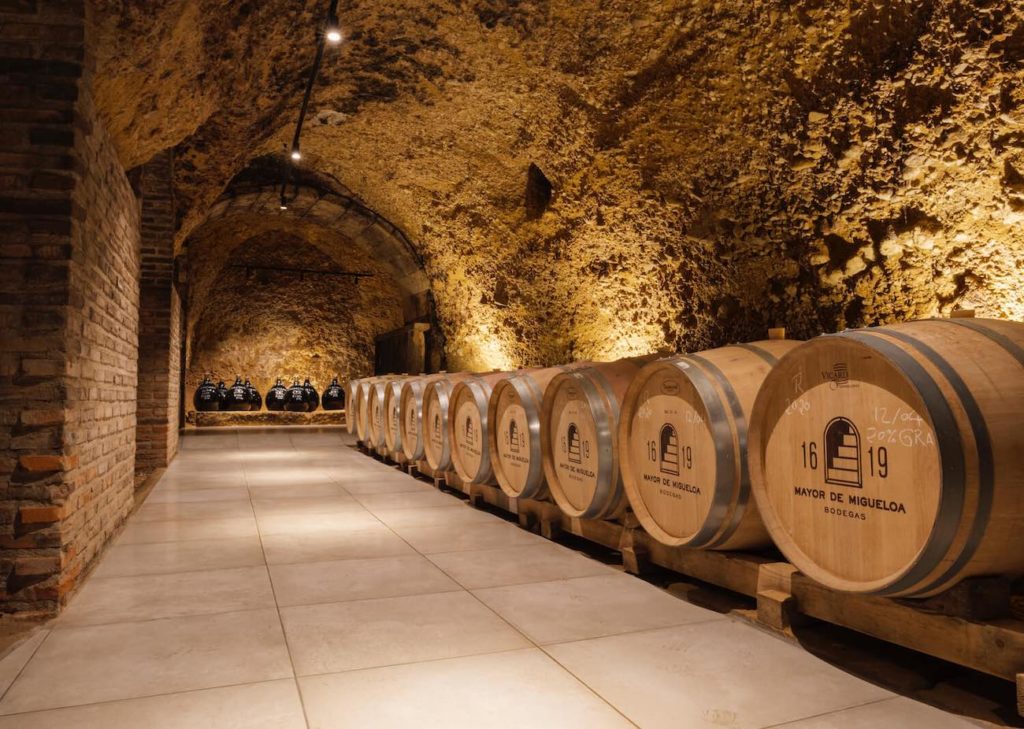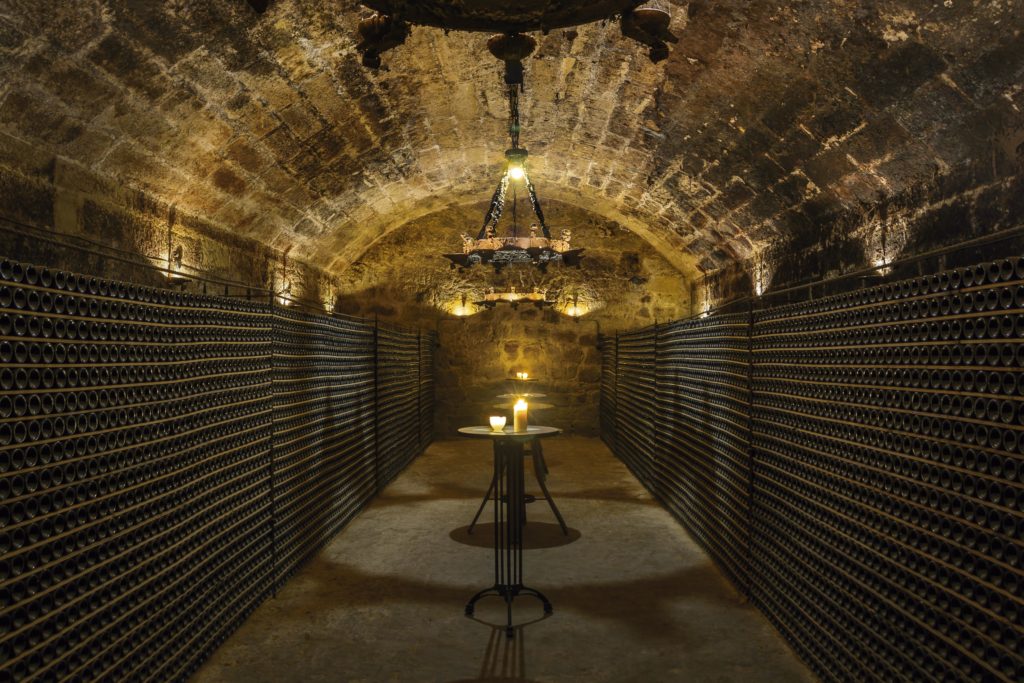Today, people think of winery architecture as soaring glass, steel, and titanium structures. Inside, rows of gleaming stainless steel fermenters and mechanized production processes add to the impression of modernity.
But how was wine made in the past when man lacked technology? Fortunately, it’s possible to visit wineries in Rioja that show us how winemaking used to be done, and in some cases, how it’s still done today.
Gravity, manpower and animal traction
The most faithful example of preindustrial winemaking is at Bodegas Lecea in San Asensio in Rioja Alta. The Lecea family has painstakingly restored the family’s 16th century underground cellar in the ‘Barrio de las bodegas’ (winery neighborhood) in the village.
Most villages in our region have a winery quarter on the edge of town. Some have been repurposed as places to have family meals and parties on weekends and during the holidays. Some have collapsed or fallen into disrepair. Only a few, especially the cellars owned by the Lecea family, recreate winemaking just as it was done in the past.
Bodegas Lecea has designed a unique wine tourism experience in their cellar around the theme of pre-industrial winemaking where gravity, manpower and animal traction were the only means available.
The most interesting of these experiences is the Festival del Pisado de la Uva (Grape Stomping Festival), a weekend in late October where visitors take off their shoes, roll up their trouser legs and tread the grapes with their feet in a cement lagar.
In addition to this harvest-themed activity, the winery has created visitor experiences all year-round based on the family’s vineyards and winery, including walks or rides through vineyards in a classic car or an e-bike, pruning and picking grapes and eating a typical Riojan meal of lamb chops grilled over vine cuttings or potatoes with spicy sausage, with a tasting of Lecea wines.
Praise for Lecea’s wine tourism experiences
These events earned Bodegas Lecea a Best Of Wine Tourism award for Architecture and Landscapes in 2018 from the Great Wine Capitals Global Network and the award for the Best Wine Tourism Experience in 2016 from the Association of Wine Routes in Spain.

Photo: Bodegas Lecea.
Laguardia – a hilltop fortress in Rioja Alavesa with a wine cellar underneath every house
The village of Laguardia is the Rioja Alavesa region’s most popular tourist destination. Its medieval layout with narrow winding streets and stone buildings with flower-festooned balconies beckon visitors to wander around and visit the village’s bars, restaurants and shops.
There is a wine cellar under each building. In fact, the network of cellars is so dense that cars are not allowed inside the city walls. Several of these cellars are open to the public, notably, Bodegas Mayor de Migueloa (winner of a 2023 Best Of Wine Tourism award and the Best of Wine Tourism People’s Choice award), and Bodega El Fabulista.
The Laguardia Tourist Office, located at Calle Mayor/Mayor Kalea 52 has a wide range of information about these underground cellars.
Bodegas Mayor de Migueloa, in the 17th century Palacio de Viana, has restored the underground cellar where visitors can see the lagos (cement fermentation tanks), wooden grape presses and barrels for ageing.

Photo: Mayor de Migueloa.
Bodega El Fabulista is below the palace owned by the family of Félix María de Samaniego, Spain’s most famous writer of fables in the 18th century. Here, wine tourists can not only visit the underground cellar, but also enjoy a dramatized tour, where actors in 18th century dress representing Samaniego or his wife Manuela de Salcedo will tell stories about Samaniego, his wanderings and some of the fables he wrote.
Hemingway and Rita Hayworth visit Paternina
One of the most famous of Rioja’s underground cellars is Conde de Los Andes in Ollauri.
The ancestors of the Paternina family excavated the vast underground cellars by hand beginning in the 15th century. Here in 1896, Federico Paternina founded a winery where wines were vinified and aged underground until the early 1970s when the company built a modern winery on the outskirts of Haro.
Nonetheless, Paternina’s historical vintages, some dating back to the 19th century, continued to gracefully age in the Ollauri cellars.
Here, the Nobel Prize-winning author Ernest Hemingway used to visit during his trips to northern Spain, often with actors such as Orson Welles and Rita Hayworth. A space in the cellar recreates one of Hemingway’s visits, where visitors can see a life-sized photo of Hemingway and bullfighter Antonio Ordóñez looking through an iron gate in the winery.

Photo: Conde de los Andes.
These unique wine tourism experiences not only give visitors a glimpse of the long history of winemaking in the Rioja region but also show that granite archways and vaulted ceilings in ancient cellars are magnificent examples of winery architecture.
Text by Tom Perry, Inside Rioja
Featured photo: Bodegas Lecea.
Learn more about Bilbao-Rioja Great Wine Capitals